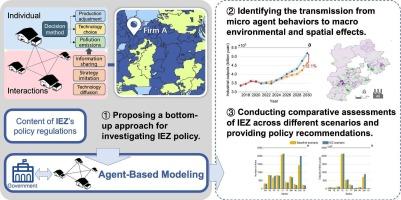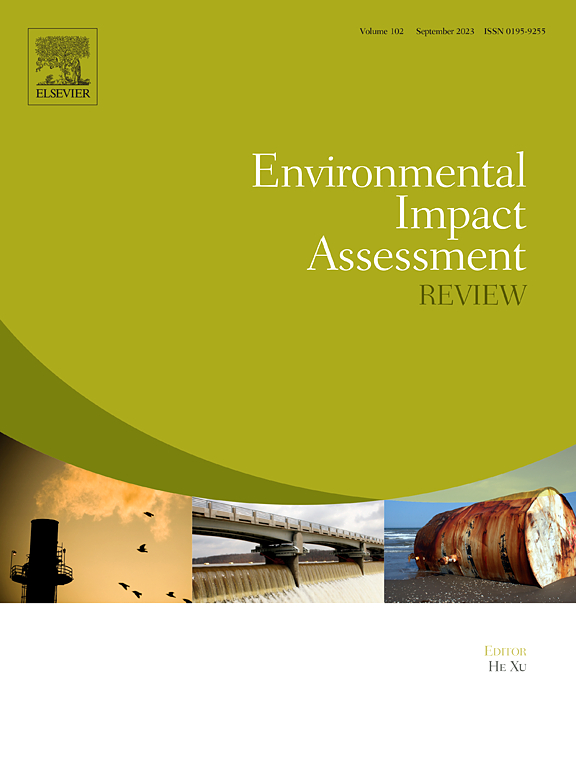Does the China's integrated environmental zoning regulation serve an effective approach for industrial restructuring?
IF 9.8
1区 社会学
Q1 ENVIRONMENTAL STUDIES
引用次数: 0
Abstract
China's Integrated Environmental Zoning (IEZ) policy, initiated in 2021, targets industrial restructuring by enforcing specific regulations for each Integrated Environmental Unit (IEU) regarding spatial arrangement, emissions, and technological efficiency, among others. However, firms, as the fundamental operational units, may react differently to IEZ interventions, potentially causing unpredictable socioeconomic side effects. This study employs an agent-based model to assess the impacts of IEZ on industrial outputs, emissions, efficiency, and spatial layout in Hebei Province. The findings reveal that (1) IEZ fosters sustainable industrial growth (12.1 %) and cuts SO2 emissions by 9.6 % by 2030 compared to the baseline scenario, primarily through the elimination of non-compliant industries and consistent technological advancements; (2) IEZ significantly suppresses air-pollution-intensive industries and considerably boosts low-emission sectors like equipment manufacturing, but has limited effects on water-pollution-intensive industries; (3) IEZ encourages firm transfers and agglomeration within IEUs, with intra-city transfers being the predominant form of industrial spatial restructuring (accounting for 90.9 %). This study suggests enhancing water pollution efficiency regulations within the IEZ and facilitating inter-city industrial transfers to optimize provincial industrial layout.

中国的综合环境分区法规是否是产业结构调整的有效方法?
中国的综合环境区划(IEZ)政策于 2021 年启动,针对每个综合环境单元(IEU)在空间布局、排放和技术效率等方面实施具体规定,以实现产业结构调整。然而,企业作为基本的运营单位,可能会对 IEZ 的干预措施做出不同的反应,从而可能造成不可预测的社会经济副作用。本研究采用基于代理的模型来评估综合经济区对河北省工业产出、排放、效率和空间布局的影响。研究结果表明:(1) 到 2030 年,综合经济区可促进工业可持续增长(12.1%),并将二氧化硫排放量减少 9.(2) 工业经济区显著抑制了大气污染密集型产业的发展,并极大地促进了装备制造业等低排放行业的发展,但对水污染密集型产业的影响有限;(3) 工业经济区鼓励企业在工业经济区内转移和集聚,市内转移是工业空间结构调整的主要形式(占 90.9%)。本研究建议加强工业经济区内的水污染效率监管,促进城市间的产业转移,以优化省级工业布局。
本文章由计算机程序翻译,如有差异,请以英文原文为准。
求助全文
约1分钟内获得全文
求助全文
来源期刊

Environmental Impact Assessment Review
ENVIRONMENTAL STUDIES-
CiteScore
12.60
自引率
10.10%
发文量
200
审稿时长
33 days
期刊介绍:
Environmental Impact Assessment Review is an interdisciplinary journal that serves a global audience of practitioners, policymakers, and academics involved in assessing the environmental impact of policies, projects, processes, and products. The journal focuses on innovative theory and practice in environmental impact assessment (EIA). Papers are expected to present innovative ideas, be topical, and coherent. The journal emphasizes concepts, methods, techniques, approaches, and systems related to EIA theory and practice.
 求助内容:
求助内容: 应助结果提醒方式:
应助结果提醒方式:


